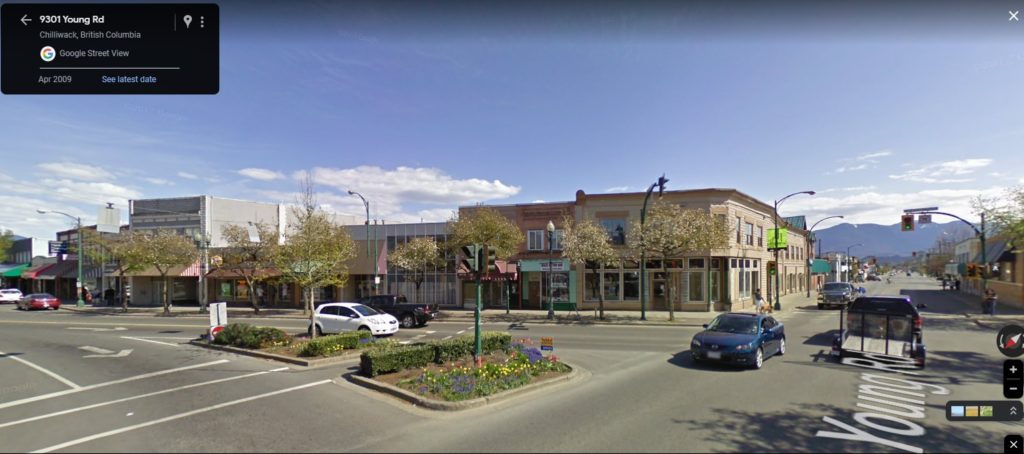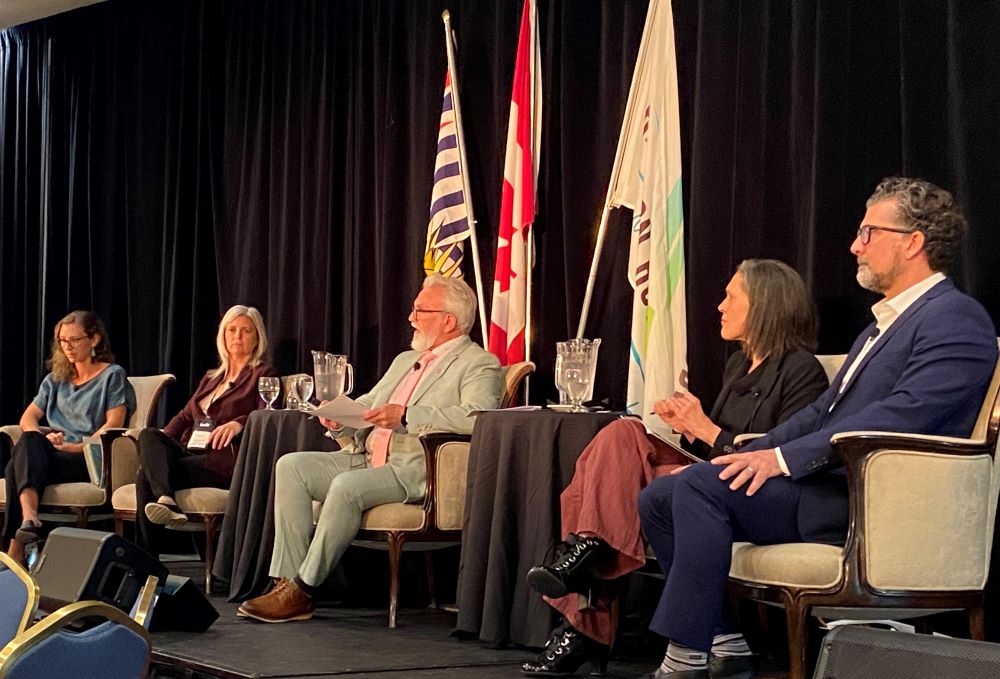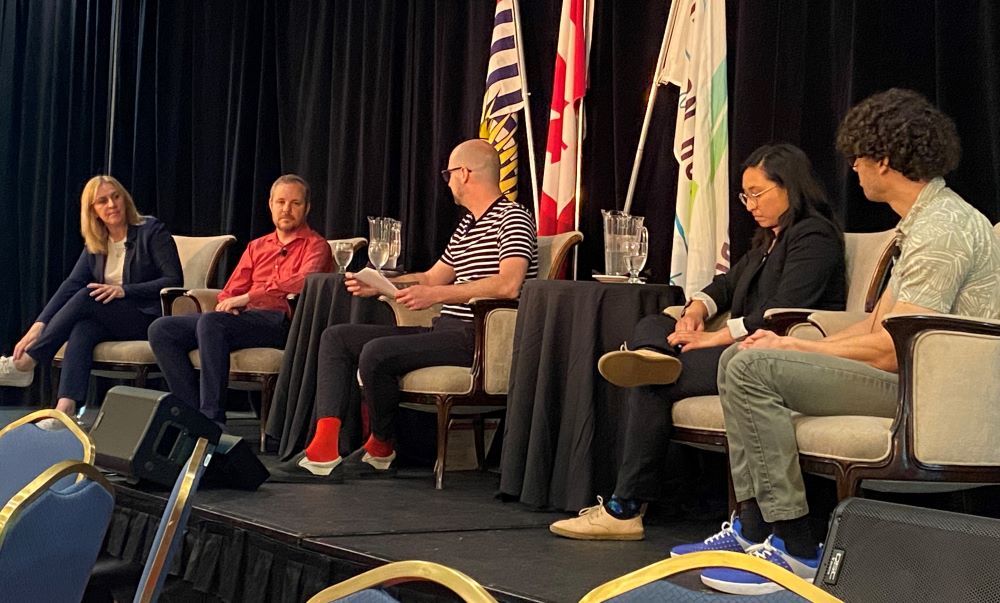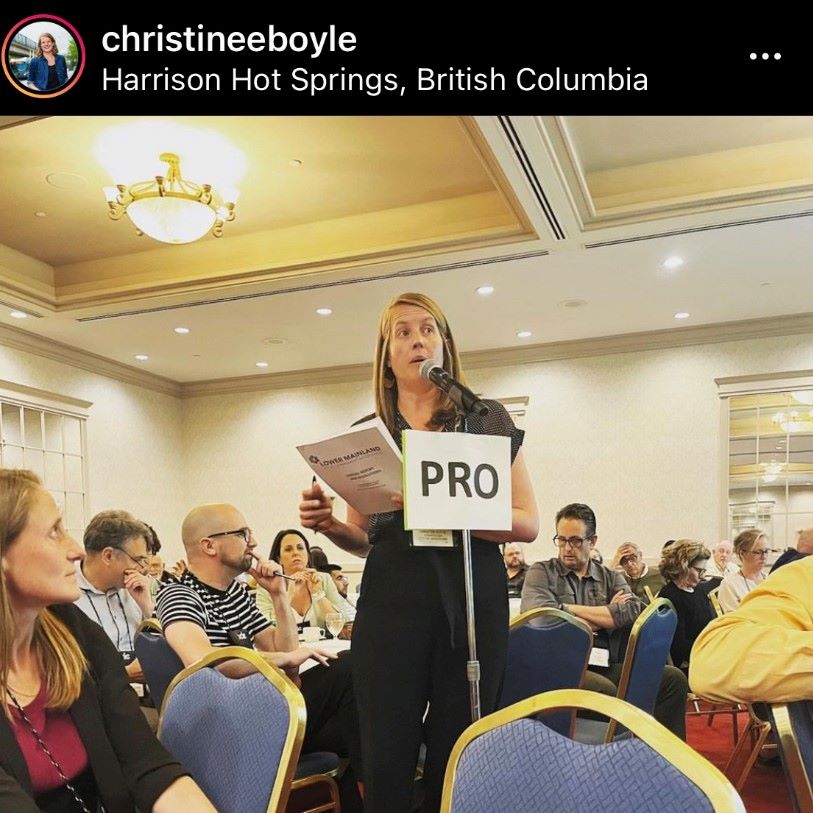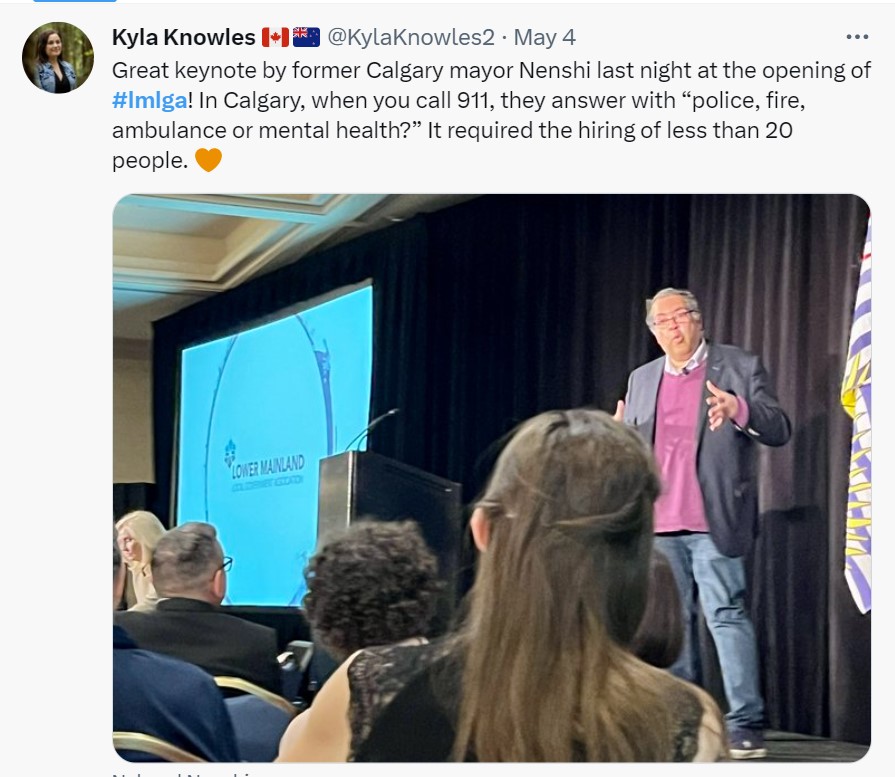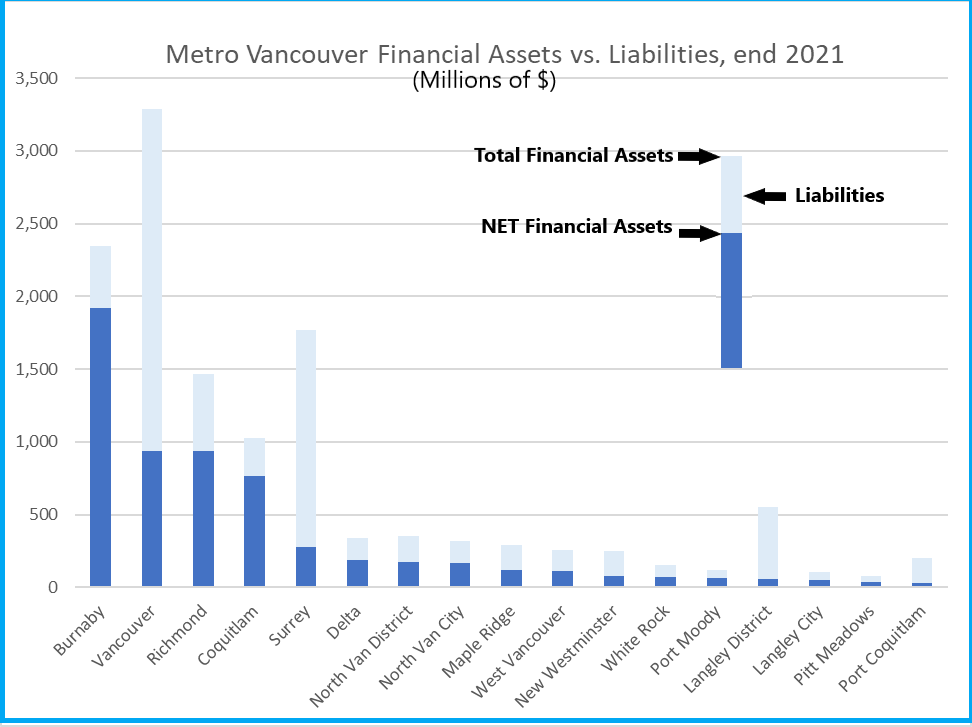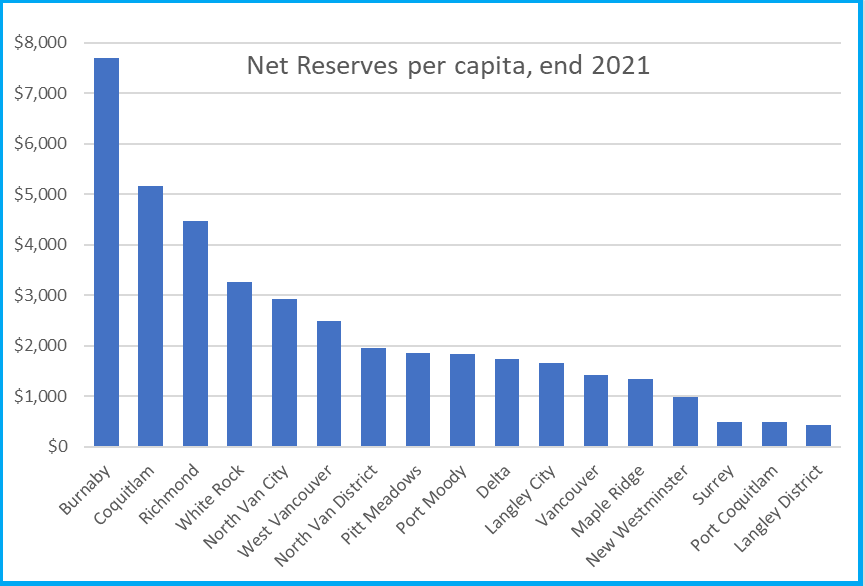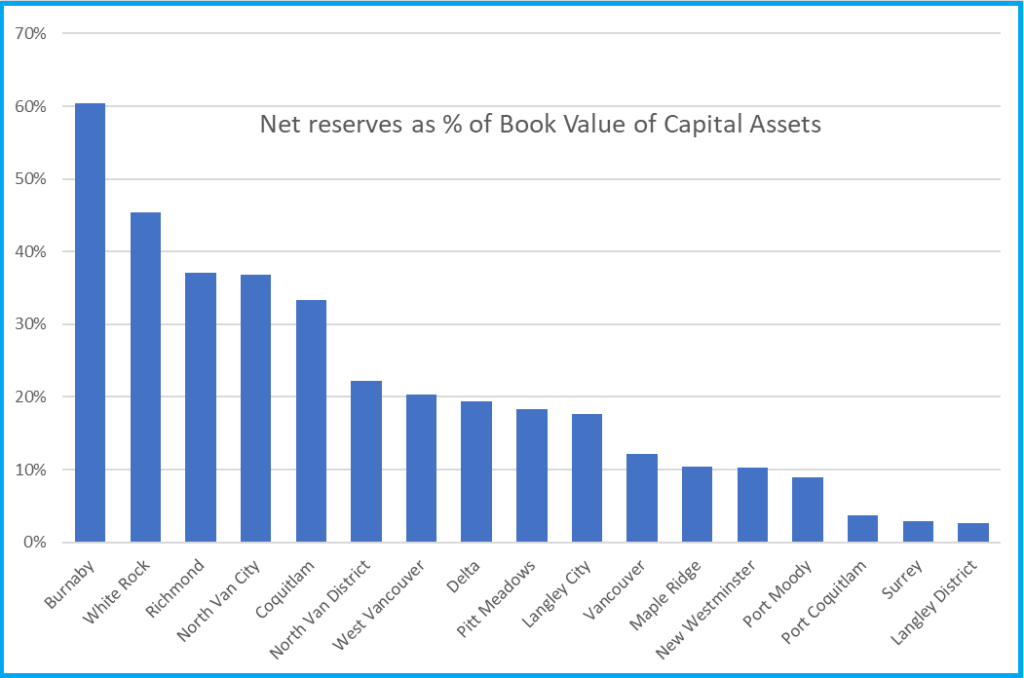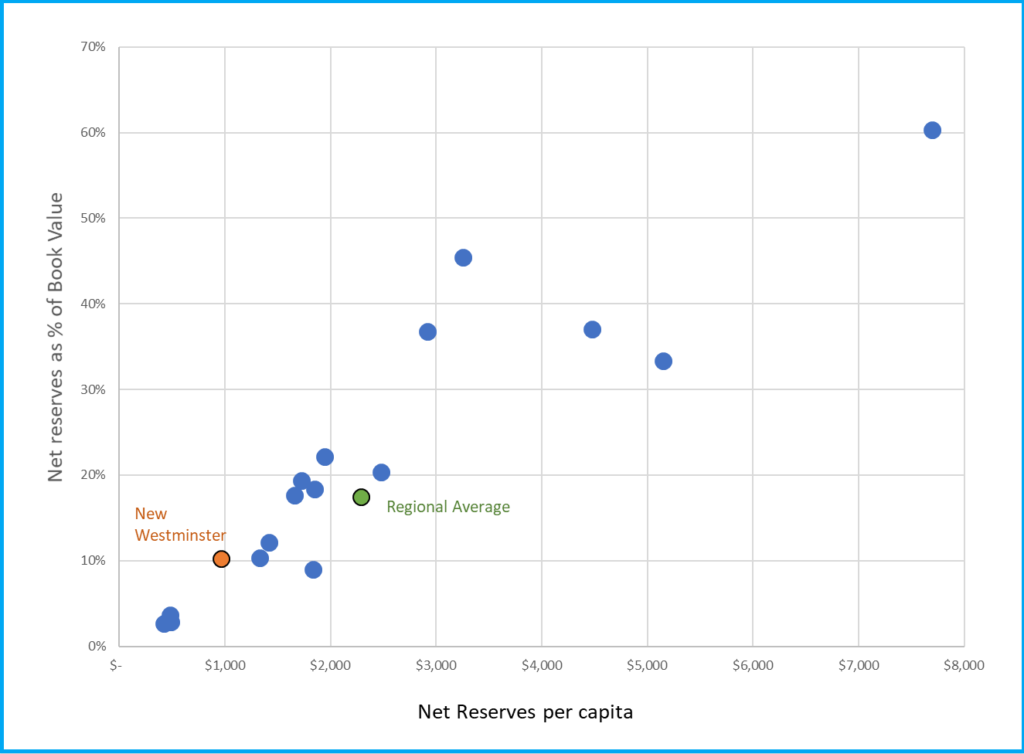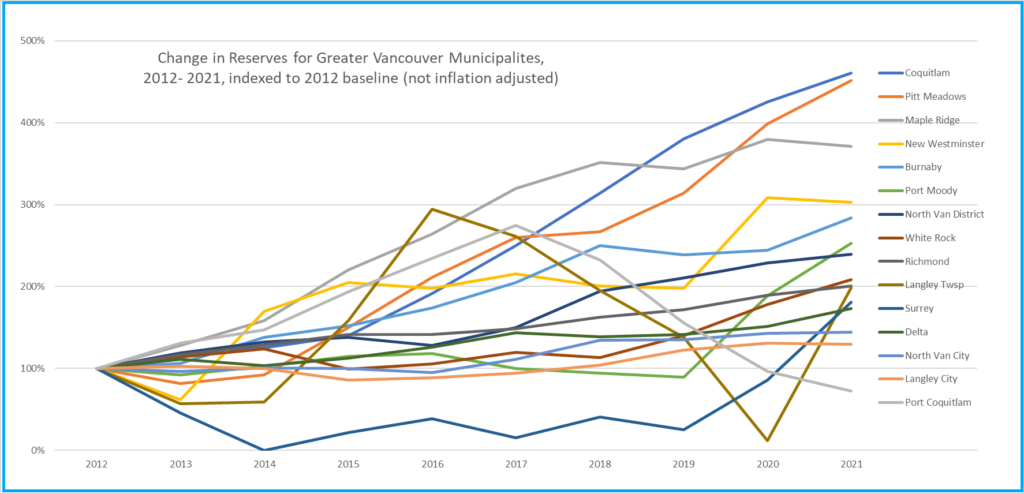It was a long, and at times complicated, council meeting on Monday, but we got a lot of really positive work done, and left the room feeling more refreshed than we should have been at that late time of night. The Agenda was lengthy, and started with an important Presentation
2022-2026 Council Strategic Plan
Council has been working on a Strategic Plan for months. This included a bunch of onboarding work, which is important when the majority of Council is new to the job, and brings different expectations of what the City is, and where it needs to be, to the equation. We had an intensive weekend retreat at the Shipyards on North Vancouver, and some workshops following that session. We have also asked staff to do a bunch of work to translate our “wants” into potential deliverables. Anyone who works for an organization the size of this City understands the challenge of distilling visions into a digestible document. I’m really proud of Council and staff for getting here. Share and enjoy.
Is it the Strat Plan I would have written? Maybe not exactly. But I am one of seven at Council, and as much as I might want to impose my own vision on everything in the community, I am part of a team, I recognize the product of the team is a better product – more likely to reflect the vision of the broader community and more likely to reflect a vision that can be realized by the team. This is a good thing, and I have a lot of faith in the team to see us though.
I’m a little disappointed that after all this work, there was not unanimous adoption of the product of that work, ostensibly because the balance of Council was unwilling to add a last minute parochial issue (that had recently been the target of a campaign by a business person with a clear pecuniary interest) into the long-discussed community-focused strategy. Alas, that is where we are politically.
More blog posts to come, because this is an important topic, but for now, the Council adopted the Strat Plan, and our work ahead is prioritized.
We then had a couple of Information Reports pulled forward for discussion:
Anvil Centre Operations
This Report provided City Council with some updates and details on Anvil Centre operations, as a compliment to the report under Consent regarding Anvil Centre budgets. After almost 9 years of operation, and the Anvil Centre being important to many of the priorities in the just-adopted Strategic Plan (Downtown revitalization, the blending of Arts and Culture with Economic Development, developing better connectedness and belonging in the city), Council asked that we have a deeper discussion around the successes and challenges of Anvil, and an opportunity to discuss the mandate of Anvil going into its tenth year. This will come back to us in Workshop format in the middle future.
Demographic Profile of Be Heard New West Registered Users
The City has operated on-line engagement portal since 2020, called Be Heard New West. This is one of the deliverables from the City’s Public Engagement Strategy, which was adopted in 2016 following a Mayor’s Task Force on Public Engagement (which included two members of Council who were not on Council then!). This is , of course, not the only Public Engagement work we do, but it is one that allows pretty close tracking of who we are engaging with, and perhaps more reliantly, who we are not reaching with our community engagement.
This report compares the demographics of the people connected with Be Heard New West with the demographics of the community gleaned from the 2021 census. We have almost 3,500 registrants (just under 5% of the population), which would be a statistically relevant number if it wasn’t self-selected. Groups under-represented might not be surprising. Renters only make up 24% of Be Heard participants, while renter households are more than 45% of the households in New West. People under 35 are underrepresented, while people 35-64 are very much overrepresented. People of Colour are underrepresented, as are immigrant residents. There was some expressed interest in Council to look at other tools to assure better representation of the community in our engagement, which slightly previewed our discussion of the Advisory Committees below.
These items were then moved On Consent:
Anvil Centre Operating Overview
As a companion to the earlier info report, this is a report that arose out of some deeper conversations Council has been having around the budget for the Anvil Centre. Where some on Council have asserted repeatedly that the Anvil is “losing $5 Million per year”. The reality is something different.
It costs about $5.3 Million to run the Anvil Centre every year. $2.4M of this is conference services, $1.2M is Community Arts & Theatre operations, and the remaining $1.5M the cost of the Museum, Archives, art and technology functions. This is offset by $2.6M in revenue earned every year, mostly from Conference Services. This does NOT include parking from the parkade under Anvil or leases of the commercial spaces in the Anvil, which are a separate revenue source, nor does it include the $2.7M in annual capital depreciation, which is not an actual cash “cost”, but an accounting for the idea that the Anvil, like all assets, has a lifespan we need to account for in our capital budget.
Appointment of Corporate Officer
We have a new Corporate Officer, and this is one of the positions we need to officially assign as City Council as they have regulatory role and delegated duties. So this was done.
Approach for Budget 2024 Engagement & Budget Timelines
This report outlines the timelines for engagement on next years’ budget. We have just wrapped the 2023 budget, but Council has expressed a desire to engage earlier and deeper with the broad community on budget matters, and a desire to complete the budget work earlier in the year so we can better align our budget with annual staff work plans, which means we are going to begin the 2024 budget engagement process this month.
There are two plans here: a quick start for 2024, recognizing he tight timelines and staff resources that will include Be Heard New West and directly outreach to a broader community, including both educational materials about municipal budgeting and questions about service levels, priorities, and tax tolerance. Given how this works and more planning time, there will be enhanced work for the 2025 budget season.
Daycare Lease Agreement at 490 Furness Street
This is the Lease that allows KIDS to operate a daycare (12 infant/toddler spots and 25 preschool-age) in a building the City negotiated out of the development of a townhouse project in Queensborough. The Developer built the building and gave it to the City. The Province provided a $500,000 grant towards construction. The City fitted it out, including using $450,000 from our daycare reserve funds, and will continue to own and maintain the building. KIDS won the contract in an open call for proposals, and will staff and operate the daycare, including daily building maintenance. The City will collect $2,800/month in lease to cover the majority of costs for the building, utilities, and to help offset the depreciation of the building, which is clearly a small percentage of what “market rent” would be for a building like this. These costs (and the lease amount) will be adjusted over the term of the lease through quarterly reporting to KIDS.
Early Steps Daycare – Playground License Agreement at 601 Queens Avenue
A new Childcare is trying to set up on Queens Avenue, but the “front lawn” is not large enough to meet provincial standards for outdoor play space. Immediately adjacent to this lawn is City boulevard with more than enough space well set back from traffic, with no clear delineation where City land starts and private property ends. The Daycare operator would like to include a small part of the City-owned lawn as their designated outdoor space. This is OK with the City, but as they are a for-profit organization, we can’t just let them use it (ref. Section 25 of the Community Charter), so we need to agree to a fair lease for the use of public space. This is that agreement.
Expanding the Inter-municipal TNS (Ride-Hailing) Business Licence to include Hope, Kent and Mission
The City is part of an Inter-Municipal Business License scheme along with 20+ Greater Vancouver municipalities to provide a single business license to ride-hailing companies, meaning the operators can legally operate across the region, and each municipality gets its share of the license revenue. Three Fraser Valley municipalities want be added to this IMBL. Which means we need to amend our own bylaw. If you have opinions, let us know by May 29th.
The following items were Removed from Consent for discussion:
Application for Strata Conversion of the existing building at 716 Columbia Street.
This building has been sitting empty for a long time, one of the persistent gaps in our downtown streetscape. Of all the gaps, this the one that we quickest to get filled, as there already was zoning for mixed use and building and building permits were granted almost a decade ago. Strata conversions are not common in New West, as we do not permit existing rental to be converted to Strata. This site was never a rental building in any official way (though it operated as a hotel at some point in the middle-distant past), and is currently not occupied by residents.
There was some discussion about the small footprint and slightly unusual layouts of these suites. They would probably not be given a development permit to build this in 2023, but they were back in 2010, and were granted building permits based on the building code and regulations applicable at the time, so it would be highly irregular (and legally questionable) to retract those approvals now that the work has finally been done.
Long and short, this is the first of the “gaps” downtown that we have got activated, with commercial at grade and some small strata apartments above. That is a good thing!
Rezoning Application for Conversion to Supportive Housing: 422 Sixth Street – Preliminary Application
The owner of this building in the Brow of the Hill wishes to convers two floors of the mixed-use office building to a form of supportive housing desperately needed in the community. 30 units of supportive housing for people facing homelessness, with on-site supports. This is consistent with the OCP designation for the site, and the mixed residential/commercial use and density are within the zoning, but the supportive nature of the housing is not, so we need to do a rezoning to address that specific point.
This is a preliminary report, and there are some details and funding to work out. There will also be a public engagement step as is typical of a rezoning, however as this is consistent with policy and priorities in the City, we are going to waive the Public Hearing on this rezoning.
We then Adopted a a Bylaw:
Tax Rates Bylaw No. 8395 2023
This Bylaw, as it suggests, sets the Tax Rates for 2023, and it was adopted by Council.
Then we had our Motions from Council:
Inviting the Community to Celebrate and Say Goodbye to the Pattullo Bridge
Councillor Fontaine
BE IT RESOLVED that the Mayor write a letter on behalf of Council to the BC Ministry of Transportation to determine the feasibility of opening the Pattullo Bridge to pedestrian, cycle and other non-vehicular modes of transportation for a period of three days (Friday, Saturday, Sunday) subsequent to the opening of the new bridge; and
BE IT FURTHER RESOLVED that Council enter into discussions with the Ministry of Transportation to facilitate a community-based celebration of the existing Pattullo Bridge by way of an ‘on bridge’ day-long street festival during the three day public access period
Through some discussion on Council, this got amended to something like (forgive my notes, this may not be perfect):
BE IT RESOLVED that the Mayor write a letter on behalf of Council to the BC Ministry of Transportation and TransLink to determine the feasibility of opening the Pattullo Bridge to pedestrian, cycle and other non-vehicular modes of transportation for a period of three days (Friday, Saturday, Sunday) subsequent to the opening of the new bridge; and
BE IT FURTHER RESOLVED that Council notify the Ministry of Transportation and TransLink that the City wants them to host a community-based celebration of the existing Pattullo Bridge by way of an ‘on bridge’ day-long street festival during the three day public access period with City input to the event; and
BE IT FURTHER RESOLVED that this include a memorial event or day be held to mark the lives lost on the structure.
This motion is consistent with the conversation we are already having with MOTI, including a couple of weeks ago when they came here to present to Council about the Pattullo Replacement project and we will need to engage TransLink, as I understand they are still the owner of the asset.
The history of the bridge is complicated. While the arch has marked the skyline of New Westminster for generations, and is iconic for that, it is also a place where many people lost their lives, and I think a day of remembrance would also be appropriate. We have a year or more to plan this out, so let’s see where the conversation goes.
Updating and determining the effectiveness of the City’s Tree Protection and Regulation Bylaw
Submitted by Councillor Minhas
BE IT RESOLVED that staff be directed to report back to Council regarding the costs, potential sources of funding and operational impacts pertaining to the City conducting an independent and arms-length review and public consultation regarding the effectiveness of our Tree Protection and Regulation Bylaw
It was not made clear what the goal of this motion was, or why this bylaw was being selected for scrutiny among out hundreds of bylaws. There is no data supporting the assertion that the tree canopy is declining, indeed it is likely holding steady. What we can say for certainty is that there are many, many more trees in the City than even a couple of years ago, and their contribution to overall canopy cover will not be realized for a decade. We plant a tree not for today, but for 20 years in the future, and that is why we have an Urban Forest Management Strategy, of which the Tree Protection Bylaw is only one component.
Has this Bylaw been reviewed? Yes. Since the initial introduction of the Bylaw, which came itself after significant public consultation and industry review, this Bylaw has been iterated to make it clearer, more functional, and easier to navigate. Indeed, our Amended Bylaw has served as a model for other municipalities who have followed our lead on navigating the unique challenges of implementing a tree bylaw in a heavily urbanized area facing significant population growth.
If the point is external arms-length review, I would suggest the reviews by the Canadian Institute of Planners, who gave our Urban Forest Management Strategy the national Award for Planning Excellence, and the Planning Institute of British Columbia who gave it an award of Excellence on Policy Planning. To experts in the field, this strategy and the Bylaw demonstrate incredible industry-leading work by our staff.
Without specific ideas of what needs fixing, I can’t support staff spending time or limited resources reviewing this program at this time. I would suggest that time and money are better spent in continued implementation of the strategy. Council did not vote to support this motion.
Finally, we had one piece of New Business:
Potential Changes to City Advisory Committee Structure
Now that we have an adopted Strategic Plan, we are going to do the next bit of work, which is adjusting our Advisory Committee Structure. This happens every Council term, as we did a pretty big shift in early 2019 to a paired Task Force – Advisory Committee model and pared back our 30+ Advisory Committees to more align with areas of strategic focus. There were strengths and weaknesses to this model, but the biggest challenge (identified going back to our 2016 Public Engagement Strategy) is making our advisory committees better match our community profile in demographics. This was also noted in the report further up on Be Heard New West demographics, where council agrees we needed new tools to better connect with the diversity of our community. In this report, one such tool is outlined.
Though there are details to work out, Community Engagement staff are going to develop a “community assembly” or “citizens assembly” or “advisory council” model. The name doesn’t matter (yet. I think it will matter, just not yet) as much as the idea – a larger demographically-representative group of residents to serve as an advisory body to Council and staff. This could be applied in various ways, including having a demographically-representative pool of hyper-engaged participants from which advisory task forces or panels could be drawn on various topics. As the need arises.
This is a new model, we don’t know of anywhere it has been applied yet, but it does represent a new model that meets the goals of our Public Engagement Strategy in a new and exciting way. It is a bit risky, but could be ground-breaking. I’m excited to see where this goes.
And that was the meeting that was. Go outside, get some sun.
